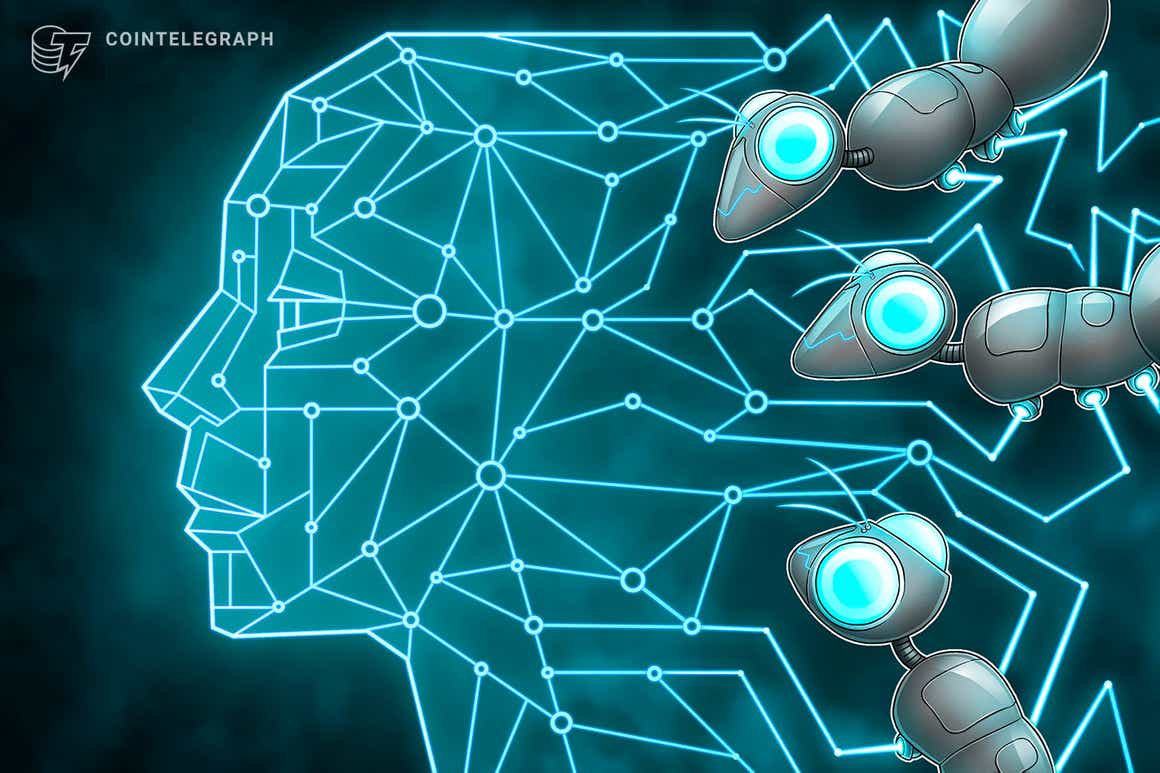Sales of nonfungible tokens, or NFTs, reached $25 billion in 2021, demonstrating that the sector is one of the most sought-after markets in crypto. Ar
Sales of nonfungible tokens, or NFTs, reached $25 billion in 2021, demonstrating that the sector is one of the most sought-after markets in crypto. Art NFTs, in particular, made a big impact last year with Christie’s reporting over $93 million in nonfungible token sales during its fourth annual Art+Tech Summit that took place this past August.
While notable, much of the crypto art scene appears to be dominated by cartoons and memes, as projects like CryptoPunks and Bored Ape Yacht Club have taken center stage. Although these projects are some of the most successful to date, a new subset of NFTs is emerging based on advanced technologies and the human imagination.
AI-generative NFTs become a new art genre
Known as “AI-generative NFTs,” these nonfungible tokens are becoming increasingly popular within the art community, along with those interested in emerging technologies like artificial intelligence, blockchain and the Metaverse. In order to create AI-generative NFTs, one would typically use generative adversarial networks, or GANs. These are algorithms that leverage computers to use data to train models to produce machine-made images resembling art.
Claire Silver, an AI-collaborative artist, told Cointelegraph that AI-generative NFT art is a relatively new genre, noting that the basic principle is that art is created in tandem with some semblance of artificial intelligence, like GAN:
“There are code-heavy options and completely code-free tools that anyone can work with. I use the latter in my work. Being able to work with an AI to bring your ideas to life is an experience like no other, it augments creativity in a way that feels like freedom, a type of play you haven’t experienced since you were a child.”
In order to create AI-generative NFTs, Silver explained that she leverages a text-to-art generator called “Eponym.” Developed by the AI-generated art company, Art AI, the Eponym tool allows users to create art based on their text of choice and then mint these creations directly to the largest NFT marketplace, OpenSea.

Eyal Fisher, co-founder of Art AI, told Cointelegraph that Eponym allows for any phrase to be transformed into a unique NFT art piece that will forever be etched onto the Ethereum blockchain as a visual representation.
Fisher explained that Eponym was built on algorithms for personalized generated art that lets people create art by interacting with a computer. “Eponym is a collaborative NFT project. Users access it by coming to the website and typing any phrase or word into a text box. The AI then generates artwork based on the text entered.” Fisher added that each text prompt can only be generated once. “There is only one Eponym called ‘Bitcoin,’” he said.

Although AI-generative art is a fairly new concept, Fisher shared that the first Eponym project sold out overnight on OpenSea, making it one of the largest collaborative art projects created by 3,500 different artists. “This is an experiment in decentralizing art. People who own Eponyms are creators of that art and want to curate it,” he said.
While Eponym lets users create their own art NFTs, Metascapes is another project that was developed by three photographers looking to combine human expression with computer algorithms. Ryan Newburn, one of the photographers behind Metascapes, told Cointelegraph that the project consists of 3,333 rare AI-generated NFTs based on photographs taken across the world. Like Eponym, Metascapes leverges AI algorithms to create nature-inspired NFTs. According to Newburn, the first Metascapes collection is planned to be minted by the end of this month or early February.

The AI-team behind Metascapes — which goes by the name Versus Labs — explained that the artwork in each collection is created by training data to recognize real-world images:
“We have images and labels for our photographs, which are called ‘training data.’ When it’s time to generate the output model, we put in a label that tells the model what type of images to put out. For example, ice caves and volcanoes were two categories the photographers have done work for in the past, but this wasn’t a majority of the input data, so we wanted to make sure the output contained examples of ice caves and volcanoes.”
Versus Labs added that Metascapes’ AI learns as it goes, noting that the generator that outputs data gets better over time since two models of learning are being used in tandem. “The generator outputs random noise at the beginning and the discriminator model tells the generator how to improve the output, so it looks more like the training data. This cycle continues, ensuring both models improve over time.”
Iurie Belegurschi, another photographer behind Metascapes, told Cointelegraph that as photographers, the Metascapes team chose to work with AI to generate images because…
cointelegraph.com
